Understanding Facial Shapes: A Complete Guide
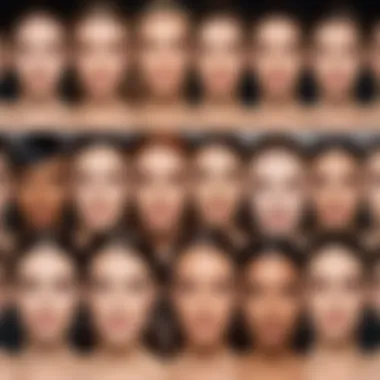
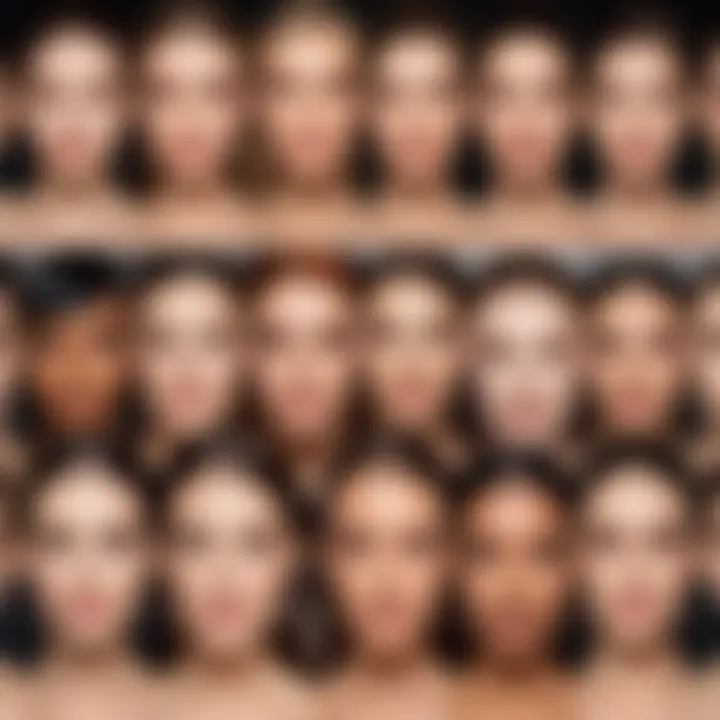
Intro
Embarking on the journey to understand facial shapes unfolds a world layered with cultural nuances and personal reflections. Often, we regard our features with judgment, influenced by standards set forth in media and society. Recognizing the significance of facial shapes can reshape how we perceive beauty, not just in ourselves but also in others.
Facial shapes play a vital role in defining aesthetics and honing beauty routines that align with our unique features. This guide aims to empower both women and men of all ages to embrace their individuality. By comprehending the intricacies of facial shapes, readers can harness this knowledge to enhance their appearance, optimizing techniques in makeup, hairstyles, and self-presentation.
As we delve into this comprehensive guide, you'll find insights on popular classifications of facial shapes, tips to accentuate your best features, and how these shapes influence our beauty norms. Ultimately, the goal is fostering appreciation for our distinctive characteristics, allowing everyone to shine in their own right.
Facial Shape Classifications
Before diving into the practical aspects, it’s useful to categorize facial shapes into broader categories. Generally, these include:
- Oval: Often described as the perfect shape by many beauty enthusiasts, with balanced proportions.
- Round: Known for its softness and fullness, round faces often convey a youthful appearance.
- Square: Marked by strong jawlines and symmetrical features, square faces exude power and confidence.
- Heart: This shape features a wider forehead tapering to a narrower chin, giving it a distinct charm.
- Diamond: Characterized by high cheekbones and a narrow forehead and chin, this shape adds a touch of allure.
Understanding these categories not only provides a framework but encourages embracing one’s own shape, recognizing its inherent beauty.
Beauty Tips Based on Facial Shapes
Within the realm of beauty, small tricks can make a world of difference. Depending on your facial shape, certain techniques can accentuate your natural features, enhancing your overall look. Here are some tips:
- For Oval Faces: Almost any hairstyle suits, but try to avoid excessive length that overwhelms your natural balance.
- For Round Faces: Aim for hairstyles that add height, such as layered cuts or long straight hair to elongate the face.
- For Square Faces: Soft waves can soften the angles, creating a harmonious balance in features.
- For Heart-Shaped Faces: Side-swept bangs can complement your forehead while emphasizing your cheekbones.
- For Diamond Faces: Consider styles that fill in the chin area and highlight those high cheekbones.
"Embrace your unique features; it's what sets you apart in a world full of copies."
Finale
Facial shapes weave a rich tapestry of identity, culture, and beauty standards. Understanding these shapes invites individuals to step into their authenticity while enhancing their everyday routines. By putting to use the principles outlined here, whether it be choosing a complementary hairstyle or perfecting a makeup approach, you can truly celebrate your individuality and encourage those around you to do the same. Beauty is subjective, and when grounded in self-acceptance, it becomes an instrument of expression rather than a standard to chase.
Preamble to Facial Shapes
Understanding facial shapes is essential for multiple reasons, ranging from personal appearance to cultural significances in beauty standards. The truth is, facial shapes contribute significantly to how we carry ourselves and how others perceive us. This article aims to unpack the intricacies of different facial shapes and their relevance to beauty routines and individual identity. By delving into the details of how facial geometry shapes not only aesthetic preferences but also influences daily makeup decisions, hairstyles, and even self-esteem, we hope to illuminate the multifaceted impact of this topic.
The Importance of Facial Recognition
Facial recognition is not just a technological phenomenon but a deeply embedded aspect of human interaction. People naturally assess others based on face shapes, sizes, and features. This celestial dance of perception can affect everything—from immediate attraction to long-term relationships. Comprehending the significance of facial shapes can help individuals make informed choices about beauty practices. Certain facial structures often carry biases about attractiveness in various cultures, making it crucial to analyze how our facial dynamics influence social standings and personal self-worth.
Moreover, accuracy in facial recognition underpins how we relate to others on an emotional and psychological level. The face conveys emotions, and understanding particular shapes aids in discerning feelings expressed through subtle facial expressions. In essence, the shape of our faces serves as a language of its own, influencing connections among people.
"The face is the mirror of the mind, and eyes without speaking confess the secrets of the heart."
Cultural Perspectives on Beauty
Beauty norms vary across the globe, reflecting a complex interaction of cultural values, historical influences, and individual preferences. In some cultures, a heart-shaped face might symbolize youthfulness and vitality, while in other areas, a longer, oval face may represent sophistication and wisdom. These varied views are telling; they offer a glimpse into how societies influence and measure beauty.
Furthermore, pop culture and media play a pivotal role in shaping perceptions of beauty. The images we see on social media or in magazines often reinforce specific facial standards that can either uplift or diminish a person’s self-esteem. For instance, the marketing of certain beauty products might favor specific facial structures, pushing consumers to believe that only these forms are worthy of admiration. This cultural pressure can lead to attempts at modifying one’s appearance to align with these often narrow beauty ideals.
Ultimately, understanding facial shapes in a cultural context allows for a more inclusive view of beauty, encouraging individuals to embrace their distinctive attributes rather than conforming to societal expectations. Recognizing this diversity fosters a deeper appreciation for what makes each face unique, emphasizing that beauty is truly subjective.
Defining Facial Shapes
Defining facial shapes is a crucial element in understanding individual beauty as it connects directly to how we perceive ourselves and how others perceive us. Each face is unique and has its own character. Recognizing and categorizing these shapes can have profound effects, influencing everything from daily grooming choices to personal style decisions. In this ever-evolving beauty landscape, knowing your facial shape offers notable advantages. It gives you a roadmap of sorts, leading the way to the most flattering makeup techniques and hairstyle choices, enhancing overall appearance and boosting confidence.
The significance of defining facial shapes is not limited to aesthetics. It's about embracing the distinct features that make you, you. In a world where trends come and go, appreciating what you already possess can be empowering. It also invites discussions around broader beauty standards, helping to dismantle unrealistic ideals and to champion diversity.
Categorization of Facial Shapes
There are generally six recognized categories of facial shapes, each with its own characteristics:
- Oval: Often considered the ideal shape. Balanced proportions define an oval face, being slightly longer than it is wide, with a soft jawline and prominent cheekbones.
- Round: Marked by full cheeks and a rounded chin. The width is similar to the length, giving it a soft appearance.
- Square: Angular features and a strong jawline characterize this shape, leading to a more structured look.
- Heart: Wider forehead tapering down to a narrow chin. This can give an impression of a pointed face.
- Diamond: The cheekbones are the most prominent with a narrow forehead and a narrow jawline, creating a diamond-like appearance.
- Long: Known for its added length, with a narrower width that makes the face appear elongated.
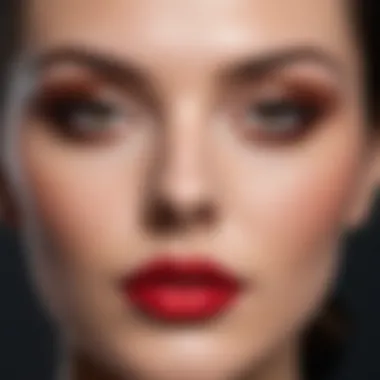
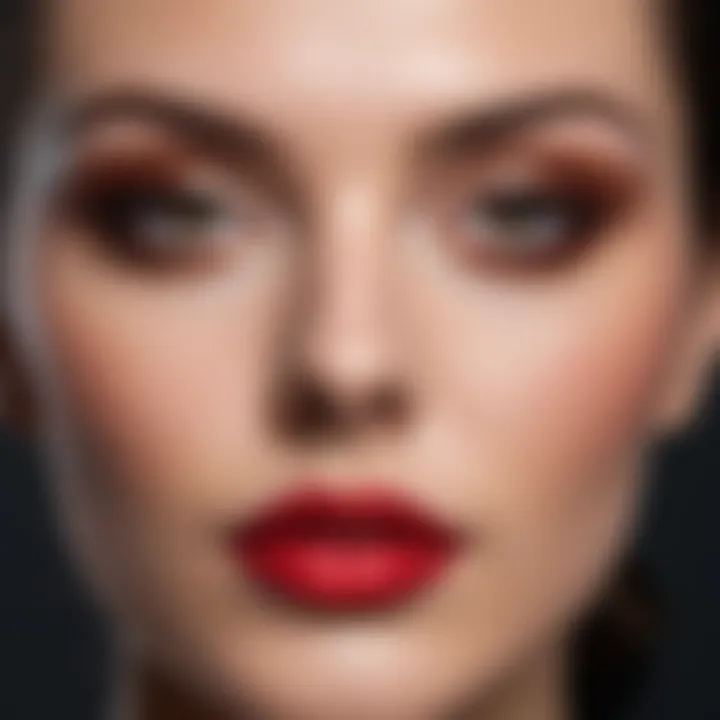
Understanding these categories allows individuals to identify their face shape, which is the first step towards making tailored beauty choices. While these classifications can guide one’s grooming routine, it’s also worth noting that each person’s characteristics can blend or resist these categories, leading to unique variations.
Measurement Techniques
Measuring your facial features can sound quite technical, but it’s actually straightforward. To determine your facial shape effectively, you will need a mirror and a tape measure or a simple ruler. Here are some tips on how to go about it:
- Forehead Measurement: Measure the widest point across your forehead, typically from hairline to hairline.
- Cheekbone Measurement: Measure from the end of one cheekbone to the other, through the area just below the eye.
- Jawline Measurement: Measure the distance between the jawline's angle under the ears from one side to the other.
- Face Length: Measure from your hairline to the tip of your chin. This gives an overall sense of the length of your face.
Ending
Understanding facial shapes is not just about vanity; it’s a celebration of individuality. Knowing how to categorize and measure them can transform beauty routines, helping everyone—from the everyday person to the beauty enthusiasts—embrace their uniqueness and join in the transformative journey of self-acceptance. Remember that each face tells a story. A distinct face shape is a first step towards love and appreciation of one’s own features.
The Various Facial Shapes
Understanding the different types of facial shapes is crucial for numerous reasons. It allows individuals to appreciate their own features and how those features interplay with societal beauty standards. Furthermore, being informed about facial shapes can profoundly influence beauty routines, helping one choose the right makeup techniques, hairstyles, and accessories that highlight rather than obscure natural characteristics. Consequently, recognizing the wide array of facial shapes transforms personal care into a more thoughtful and personalized experience.
Oval Face Shape
The oval face shape, often lauded for its balance and symmetry, is characterized by gently rounded cheeks, a slightly narrower chin, and a forehead that is a bit wider than the jawline. This shape tends to be versatile in terms of both hairstyles and makeup applications.
Benefits of an Oval Face Shape:
- Versatile Haircuts: Many hairstyles complement this shape, from long layers to short bobs. An oval face can handle bold bangs or more intricate cuts without fear of discordance.
- Makeup Friendly: When it comes to makeup, an oval shape provides a practical canvas. Individuals can experiment with different techniques without being constrained by their facial structure. Highlighting and contouring can be approached in a way that simply complements the natural contours rather than altering them.
Round Face Shape
A round face shape features fuller cheeks and a similar width and length, giving it a more youthful appearance. Individuals with this shape often look for ways to elongate their features.
Styling Considerations:
- Hairstyles: Options such as long layers or styles that add height can create the illusion of an elongated face, giving a leaner look. Avoiding overly blunt cuts helps in steering clear of a wide appearance.
- Makeup Techniques: Using contour around the sides of the face can help create angles and definition. Highlighting the center of the forehead, nose, and chin can also draw the eyes to your most flattering features.
Square Face Shape
A square face shape is marked by a strong jawline and a broader forehead, making the face appear more angular. People with square faces may want to soften these sharp features.
Key Features:
- Haircut Choices: Layers, waves, or angled cuts can soften the look. Long hair often helps elongate the facial structure too.
- Makeup Approach: Contouring the jawline and forehead while highlighting the center of the face can create a more balanced look, easing the angularity of a square shape.
Heart Face Shape
The heart face shape is characterized by a wider forehead that tapers down to a narrow chin. This shape often exudes elegance and is seen in many celebrities.
Styling Insights:
- Ideal Hairstyles: Soft bangs, side-swept styles, or volume at the chin can beautifully frame this face shape. Keeping hair longer also helps balance the wider forehead.
- Makeup Tricks: Focus on accentuating the eyes and cheeks. Keeping makeup light on the chin area and highlighting the upper parts of the face generally adds to the overall harmony of this shape.
Diamond Face Shape
This shape features a narrow forehead and chin, with broad cheekbones. It’s less common, making it truly distinctive and often striking.
Recommendations for Diamond Shapes:
- Favorable Hairstyles: Side-parted styles or those with volume on the top can create balance. Layers around the jaw can also enhance the natural angles.
- Makeup Style: Contouring can emphasize the cheekbones while softening both the forehead and chin, which may need a little balance in the overall look.
Long Face Shape
The long face shape features a length that is noticeably greater than the width, often resulting in a delicate and refined appearance. People with this shape may wish to achieve a sense of balance.
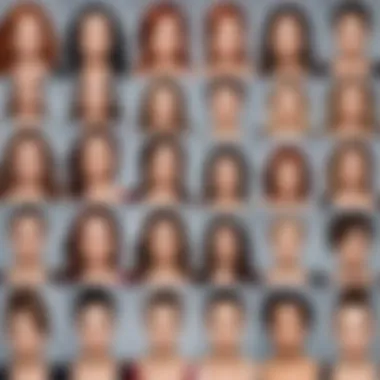
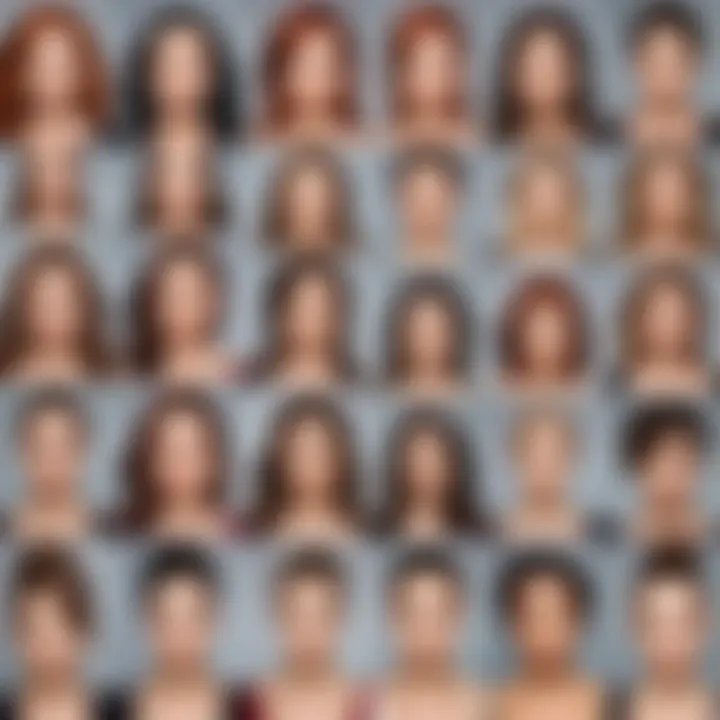
Balanced Styling Tips:
- Summer Haircuts: Shorter styles and bobs can effectively add fullness to a long face. Curls or waves also create visual width, adding dimension.
- Makeup Techniques: Use contouring strategies to shorten the appearance of the face, blending darker shades along the sides while highlighting areas across the cheeks, chin, and forehead captivates focus on the facial aspects that deserve shine.
Impact of Facial Shape on Beauty Routines
Understanding how facial shapes influence beauty routines is crucial for anyone looking to refine their appearance or enhance their natural features. Beauty, as they say, lies in the eye of the beholder; however, there are factors at play that can help emphasize one’s unique attributes. By aligning cosmetic techniques and choices with specific facial shapes, individuals can achieve a look that not only feels authentic but also amplifies their inherent beauty.
Makeup Techniques by Shape
Makeup can be both an art and a science, particularly when tailored to fit different face shapes. For example, an oval shape often allows for a versatile approach, with both soft and dramatic looks working well. But when navigating the makeup terrain, it's essential to adapt techniques to match the contours of your face.
- Round Faces: For those with round shapes, contouring can be your best friend. Use a deeper foundation along the sides of your cheeks and temples to create more definition. Highlight the center of the face, particularly the forehead and chin, to draw the viewer’s eye inward.
- Square Faces: Softening the angles of a square face can involve creating shadows along the jawline and temples, helping to introduce a more oval appearance. A rounded blush technique applied higher on the cheekbones also assists in this process, giving a more youthful appearance.
- Heart-Shaped Faces: Here, emphasize the cheekbones while softly contouring the forehead to balance a wider upper face. Use lighter shades across the chin and jawline to soften those sharper angles, presenting a harmonious look overall.
When applying makeup, consider not just the colors and products but also the techniques that best suit your face shape. It's like tailoring a suit; invest the effort, and the results will reflect it.
Hairstyle Recommendations
Choosing a hairstyle that complements your facial shape can be a game changer. The right cut can enhance your features and even change your overall look.
- Oval Faces: This shape is often termed as the most versatile for hairstyles. Layered cuts, long waves, or a chic bob work well. You have the luxury of sporting almost any style, so get creative.
- Round Faces: Lengthen the appearance of a round face with longer hairstyles. Long layers or side-swept bangs can add dimension. An updo pulled high can create the illusion of a longer silhouette.
- Square Faces: Soft, layered cuts that frame the cheeks help soften the strong jawline. Beachy waves or curly styles can introduce visual softness. Bangs that graze the eyebrows can also balance the face shape nicely.
Making the right hairstyle choice can help enhance your favorite features while providing a flattering contrast to the less desired aspects.
Eyewear and Accessories Choices
Eyewear and accessories are often underestimated elements in beauty routines. The correct choice here can add greatly to one's personal style.
- Round Faces: Opt for angular frames, such as rectangle or square shapes, to create contrast and bring balance. Oversized glasses can also make a statement while accentuating the softer lines of a round face.
- Square Faces: Seek round or oval frames to counter the sharp angles. Cat-eye glasses can add a hint of flair while balancing the overall boldness of a square shape.
- Heart-Shaped Faces: Wide frames work wonders. Think of styles that broaden the lower part of your face, such as aviators or rimless styles that won’t compete with stronger features like prominent cheekbones.
Accessories like earrings also play a role. Drop earrings can lengthen and soften the face for round shapes, while broader styles can work well for square features.
"Style is a way to say who you are without having to speak."
Psychological Perspectives on Facial Shapes
Understanding facial shapes goes beyond aesthetics; it's deeply entwined with psychology. The way individuals perceive themselves and others can significantly impact their confidence, relationships, and even their choices in personal grooming. This section is dedicated to exploring the psychological ramifications of facial shapes, offering insights on how these views shape our societal standards of beauty.
Influence on Self-Perception
The shape of one’s face can play a pivotal role in self-esteem and identity. Individuals often internalize societal norms related to beauty, shaped by the media and culture at large. For example, a person with a heart-shaped face may find themselves gravitating towards styles that accentuate their angular features, while another with a square jawline might feel pressured to soften their appearance. This pressure can lead to a constant pursuit of perceived perfection, feeding into a cycle of dissatisfaction.
- Self-Reflection: Many find themselves pondering: "Does my face shape meet the beauty standards set by society?" This internal dialogue can foster feelings of inadequacy and influence choices in everything, from fashion to social interactions.
- Acceptance: On the flip side, understanding one’s facial structure can lead to a journey of self-acceptance. Recognizing that beauty is diverse allows individuals to appreciate their unique features, promoting healthier self-image.
"Beauty is not about being like everyone else; it’s about celebrating what makes you unique."
Ultimately, embracing one's facial shape is a vital step toward a positive self-perception. When individuals feel confident in their natural features, they tend to radiate a kind of beauty that transcends conventional standards.
Cognitive Biases and Beauty Standards
Cognitive biases play a significant role in our understanding of beauty and face shapes. These biases lead us to associate certain characteristics with attractiveness, often reinforcing narrow definitions of beauty. The halo effect is one such bias, where individuals associate physical traits with positive traits like kindness or intelligence. For instance, a sculpted jawline might not only be seen as attractive but also as a marker of strength or capability, regardless of the individual’s actual personality traits.
- Stereotyping: When we categorize facial shapes based on societal constructs, it can lead to misconceptions. A round face might unfairly be associated with youthfulness or a lack of seriousness in a world that prizes perception. Therefore, those with rounder faces may feel compelled to alter their looks to fit a perceived narrative of maturity.
- Shifting Standards: Beauty standards are not static; they evolve with time and culture. What might be seen as desirable in one era could be less stoke-worthy in another. Thus, the psychological understanding of facial shapes must factor in the changing landscape of beauty ideals.
Incorporating awareness of these biases can help individuals make more informed choices about their beauty routines, leading to greater personal satisfaction and wellbeing. By understanding and challenging these cognitive biases, one can forge a path toward embracing their true self, regardless of societal pressures.
Embracing Individuality
Embracing individuality in terms of facial shapes goes beyond mere aesthetics. It's a realization that each person's face tells a story, reflecting unique genetic heritage, life experiences, and personality traits. This recognition not only celebrates our differences but also encourages us to see beauty in diversity. By understanding and accepting our own features, we create a positive relationship with ourselves, which can significantly boost self-esteem. For many, this journey leads to a deeper acceptance of who we are and helps dispel societal pressures to conform to a narrow standard of beauty.
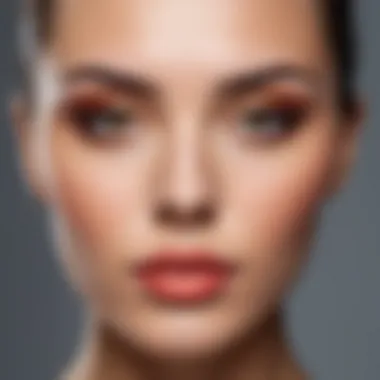
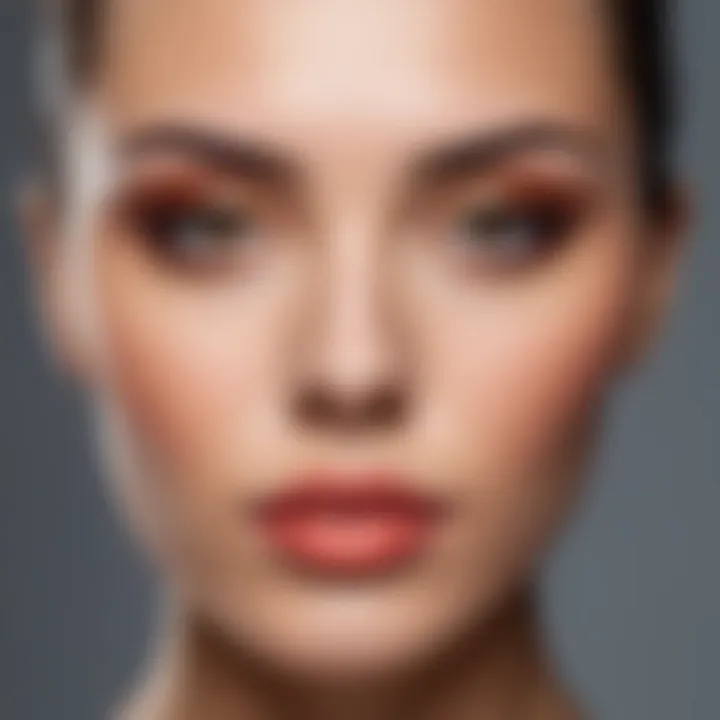
The focus on individuality has several crucial benefits. Firstly, it promotes authentic expressions of style. When individuals are aware of what makes their face shape distinct, they can adopt makeup techniques and hairstyles that enhance their own beauty rather than attempting to imitate someone else’s look. Secondly, recognizing the unique features of one’s own face can create a greater appreciation for diversity in beauty itself. Instead of judging ourselves through a distorted lens, we can see a world rich in variety.
Recognizing Unique Features
Each facial shape carries distinct traits that can serve as an advantage when it comes to style choices. Understanding one’s unique features helps cut through confusion and helps individuals tailor their beauty routines. For example, people with a square face often have strong jawlines, which can be softened with the right contouring techniques. On the other hand, those with a heart-shaped face may benefit from hairstyles that add width around the jaw, balancing the proportions.
Here’s a simple framework for recognizing unique features:
- Identify Face Shape: Understanding whether your face is round, oval, square, or heart-shaped is the first step.
- Noticing Asymmetries: Everyone has some level of asymmetry. Small differences can be amplified or softened with the right makeup techniques.
- Highlighting Natural Beauty: Focus on the unique elements, like high cheekbones or a delicate forehead, and find ways to accentuate them.
“The beauty of our facial features lies not in how we see ourselves through others, but in how we embrace what we truly are.”
Celebrating Diversity in Beauty
Diversity is a powerful word; it embodies a spectrum of beauty that encompasses every shape, size, and color. Celebrating this diversity in beauty is imperative in shifting societal standards. When faced with diverse representations in media and fashion, individuals are more likely to embrace their uniqueness. This leads to a cultural shift where differences rather than conformity are valued.
The social media platform Instagram, for instance, has opened doors to new conversations about beauty. People are sharing their stories, showcasing diverse features that break away from traditional norms. As a result, many are inspired to feel good about their individualized beauty rather than hide behind filters and mainstream standards.
To effectively celebrate diversity:
- Promote Inclusion: Showcase diverse beauty across various forums to emphasize that everyone is a part of the beauty conversation.
- Engage in Self-Love: Encourage self-acceptance and love for one's unique traits. Self-acceptance often resonates with others, creating a larger conversation.
- Advocate for Representation: Support brands that promote inclusivity. Every representation counts, and each voice contributes to a larger narrative of beauty.
This renewed focus on individuality and diversity in beauty not only empowers the individual but also fosters a more inclusive society. It's about time we embrace our uniqueness and recognize the beauty that's found in every face.
Practical Tips for Enhancing Facial Features
Enhancing your facial features is more than just a process; it’s about appreciating and celebrating your uniqueness. With so many beauty trends out there, it can be easy to get lost in the mix. However, understanding practical tips tailored to your facial shape not only boosts your confidence but also helps you navigate cosmetic choices with ease. These tips can guide you as you develop a personal beauty routine that reflects your individuality while ensuring you shine in your own skin.
Skin Care Routines
Begin with the foundation—your skin. Good skin care is essential for everyone, but it can take on a special significance depending on your facial shape. For instance, those with a round face might struggle with excess oil, while those with more angular features may find dryness to be their main concern. Tailoring your skin care routine to meet these specific needs can result in glowing, radiant skin.
- Cleansing: Use a gentle cleanser suited for your skin type. Those with oily skin should consider foam-based cleansers, while dry skin might benefit from cream-based options.
- Exfoliation: Regular exfoliation helps remove dead skin cells, promoting a smoother appearance. For round faces, gentle scrubs can help refine soft contours, whereas sharper angles may appreciate the definition exfoliation provides.
- Moisturizing: No one-size-fits-all here! If you have a heart or diamond face, a lightweight moisturizer can help balance out the features. On the other hand, square-shaped faces might need something richer to soften strong lines.
- Sun Protection: Never underestimate the power of sunscreen. Daily application can prevent premature aging and skin damage, which is crucial for everyone.
Makeup Application Techniques
Makeup can act as a powerful enhancer for your facial features. Instead of masking, it should emphasize what makes you, you. Here are some practical application techniques based on specific facial shapes:
- Round Face: Contouring the sides of your face can create the illusion of elongation. Keep blush high on the cheeks and focused slightly above the apples, and opt for a soft highlight down the center of the face.
- Oval Face: This shape is often seen as versatile, but emphasizing your features can still be beneficial. Use minimal contouring on the forehead and chin, focusing instead on bringing attention to the cheekbones with highlighter.
- Square Face: Soften those hard lines! Contour the jawline and temples, and apply blush slightly above your cheekbones. This draws attention upward, creating a more oval effect.
- Heart Face: To balance a narrower chin, highlight the forehead and cheekbones while applying dark blush in a round motion closer to the temples.
- Diamond Face: With a narrower forehead, highlight can be applied to the areas right above your cheekbones, blending down the sides of the face to soften the sharp angles.
"Makeup should accentuate your best features, not cover them up. Know your shape, and let your true self shine!"
These skin care routines and makeup techniques work hand in hand to bring out your best features. By understanding the unique aspects of your facial shape, you can cultivate a beauty routine that not only enhances your external appearance but also fortifies your internal self-image. Remember, real beauty comes from confidence, so take these tips and run with them!
Consider these insights as a means to embrace your own beauty journey, where every day can become an opportunity to highlight the facets that make you distinctive.
The End
The conclusion acts as the final piece of the puzzle, wrapping up all the threads of information discussed throughout the article. Understanding facial shapes is essential, as it provides a framework for individuals to appreciate their features and the unique characteristics that define them. In exploring facial shapes, readers gain insight not just into aesthetics but also into how their features influence their beauty routines. These interactions have real implications; harmony in features can enhance confidence and alter self-perception.
The Ongoing Evolution of Beauty Standards
Beauty standards are far from static. They evolve, often reflecting cultural shifts and societal changes. Historical contexts have produced a variety of ideals—from the Renaissance appreciation for symmetry to today's nuanced understanding of diversity. Individuals now seek admiration for their authenticity rather than fitting into a mold. This ongoing evolution gives individuals permission to embrace their unique facial shapes and the beauty that comes with them.
For example, the notion that only certain shapes are associated with beauty has been upended; we now celebrate fuller cheeks and distinctive jawlines as indicators of charm. Beauty icons today, across different media, express inclusivity, resulting in wider representation of features. This means a diverse range of looks can be regarded as attractive. Indeed, as society grows more aware of various dimensions of beauty, individuals can take heart in knowing their unique facial shape has a place in the great tapestry of attractiveness.
Encouraging a Personal Journey in Beauty
Embarking on a personal journey in beauty can be quite transformative. It's not merely about following trends; it's about discerning what resonates with one's identity. Each facial shape comes with its unique features, deserving recognition and enhancement. Encouraging individuals to embrace their features can foster a more profound connection with oneself.
- Identify Your Features: Start by acknowledging your particular facial shape. Each angle and curve contributes to your unique identity. Reflect on what you like, and even what you wish to enhance.
- Experiment Mindfully: Trying out new styles, makeup techniques, and hairstyles empowers you to discover what complements your characteristics. Take inspiration from others but make the look your own.
- Stay Informed: The beauty industry is continuously shifting, with new trends emerging regularly. Being informed can assist in making choices that align with your individuality.
"Beauty is ultimately about feeling confident in your own skin. Embracing your unique facial shapes and features can truly redefine how you perceive beauty."
By engaging in this personal journey, individuals can derive meaning from beauty practices that aren't just superficial, rooted instead in genuine self-appreciation. Ultimately, this encourages a more profound societal embrace of diversity in beauty—a journey well worth taking.







